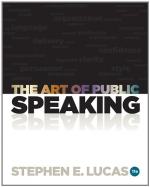7. What effect do his own suggestions have on the speaker himself?
8. Can suggestion arise from the audience? If so, show how.
9. Select two instances of suggestion in the speeches found in the Appendix.
10. Change any two passages in the same, or other, speeches so as to use suggestion more effectively.
11. Deliver those passages in the revised form.
12. Choosing your own subject, prepare and deliver a short speech largely in the suggestive style.
CHAPTER XXIII
INFLUENCING BY ARGUMENT
Common sense is the common sense of mankind. It is the product of common observation and experience. It is modest, plain, and unsophisticated. It sees with everybody’s eyes, and hears with everybody’s ears. It has no capricious distinctions, no perplexities, and no mysteries. It never equivocates, and never trifles. Its language is always intelligible. It is known by clearness of speech and singleness of purpose.
—GEORGE JACOB HOLYOAKE, Public Speaking and Debate.
The very name of logic is awesome to most young speakers, but so soon as they come to realize that its processes, even when most intricate, are merely technical statements of the truths enforced by common sense, it will lose its terrors. In fact, logic[25] is a fascinating subject, well worth the public speaker’s study, for it explains the principles that govern the use of argument and proof.
Argumentation is the process of producing conviction by means of reasoning. Other ways of producing conviction there are, notably suggestion, as we have just shown, but no means is so high, so worthy of respect, as the adducing of sound reasons in support of a contention.
Since more than one side of a subject must be considered before we can claim to have deliberated upon it fairly, we ought to think of argumentation under two aspects: building up an argument, and tearing down an argument; that is, you must not only examine into the stability of your structure of argument so that it may both support the proposition you intend to probe and yet be so sound that it cannot be overthrown by opponents, but you must also be so keen to detect defects in argument that you will be able to demolish the weaker arguments of those who argue against you.
We can consider argumentation only generally, leaving minute and technical discussions to such excellent works as George P. Baker’s “The Principles of Argumentation,” and George Jacob Holyoake’s “Public Speaking and Debate.” Any good college rhetoric also will give help on the subject, especially the works of John Franklin Genung and Adams Sherman Hill. The student is urged to familiarize himself with at least one of these texts.
The following series of questions will, it is hoped, serve a triple purpose: that of suggesting the forms of proof together with the ways in which they may be used; that of helping the speaker to test the strength of his arguments; and that of enabling the speaker to attack his opponent’s arguments with both keenness and justice.




